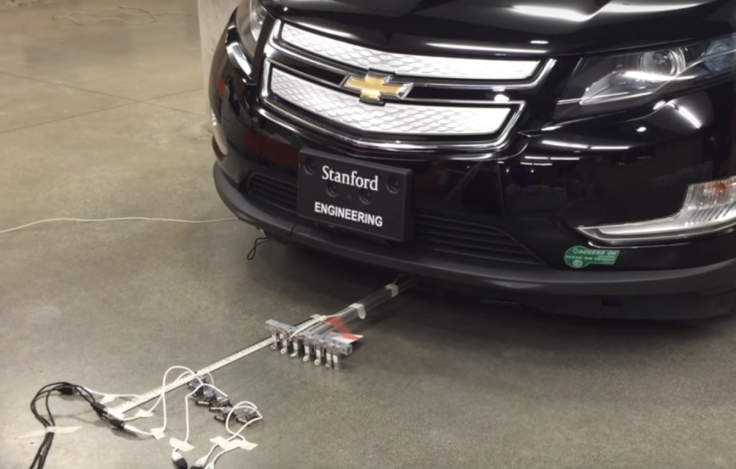Watch ant-like micro-robots team up to pull 2-tonne car

Martin Luther King Jr. once said that "there is power in numbers and there is power in unity". While he definitely was not referring to miniature robots when he uttered those powerful words, they nevertheless ring true for a team of six micro-robots that can lay claim to moving a 3900lb car and driver through teamwork and technology inspired by the natural world.
The feat marks a new level of success for scientists at Stanford University, where researchers in the Biomimetics and Dextrous Manipulation Laboratory have experimented with the capabilities of tiny robots being able to move larger objects.
Inspired by the hive-mind, co-operation shown by the various species of ants across the world, the 'microTugs' are capable of pulling over 2,000 times their own 3.5oz body weight alone, but are exponentially stronger when their efforts are synchronised.
The video below documents the learning process of the Stanford pioneers, with the initially developed micro-bots moving in "jerky jolts" that exerted strong, but short forces that did not create the ideal conditions for teamwork.
The solution was a slow process (sped up to 20x the actual speed in the video), but a sextet of custom microTugs actually managed to pull a Chevrolet vehicle and its passenger across a polished concrete floor via a winching gate system.
"By considering the dynamics of the team, not just the individual, we are able to build a team of our 'microTug' robots that, like ants, are superstrong individually, but then also work together as a team," said Stanford graduate student David Christensen, one of the authors of a research paper for IEEE Robotics and Automation Letters.
While teamwork was seemingly a key factor in the experiment's advances, it was also helped by a special adhesive inspired by the toes of another animal species – the gecko.
The gecko family's sticky feet have long been admired by the scientific community as their ability to stick to almost any surface is an enviable trait that could have many practical uses, such as the wonderfully named Geckskin.
The microscopic foot hairs of a gecko bond to surfaces through Van Der Waals's forces and using silicones, plastics and other materials, Stanford University has managed to mimic this phenomenon to the point of even having a human free-climb a glass wall.
© Copyright IBTimes 2025. All rights reserved.






















